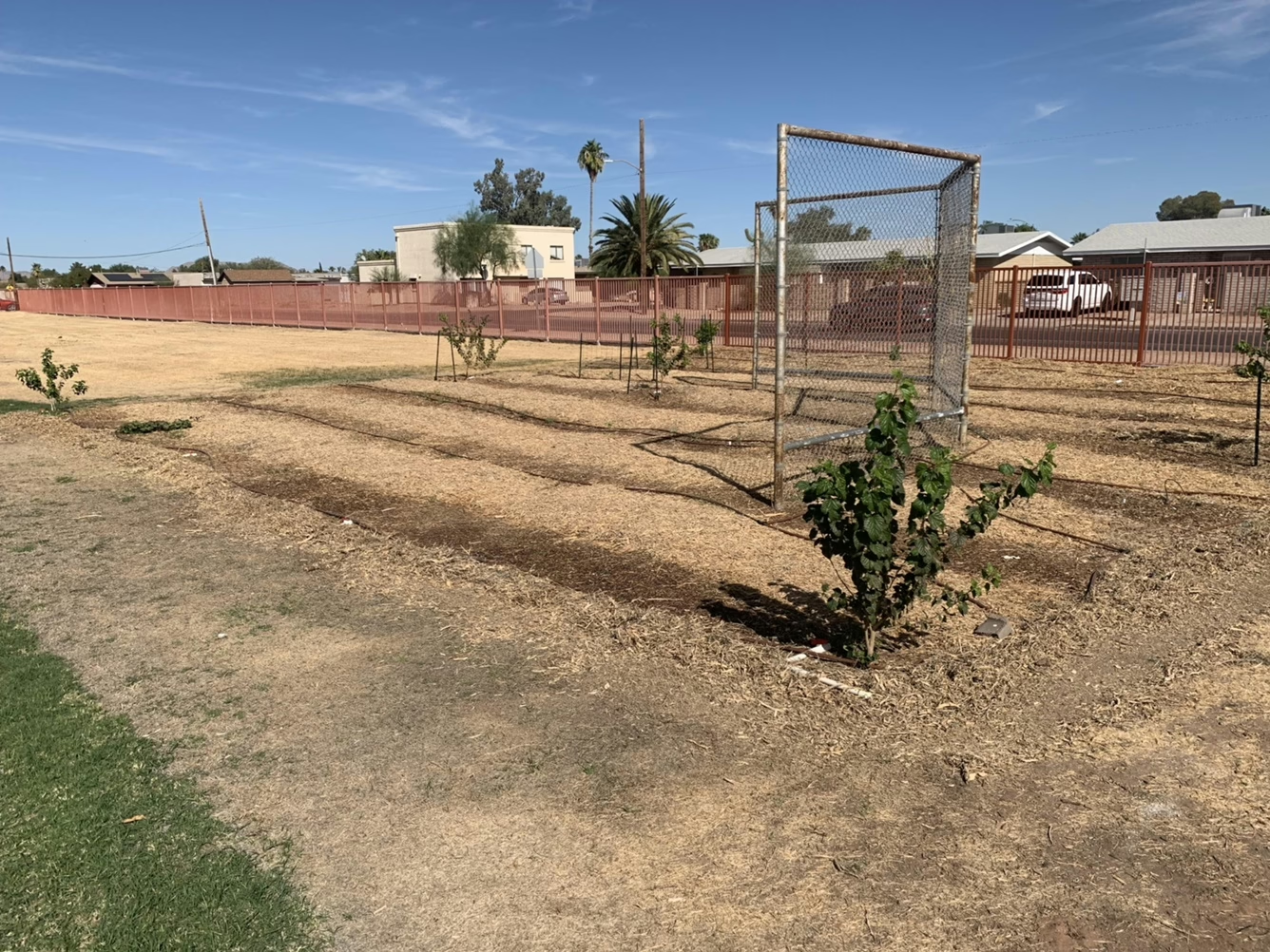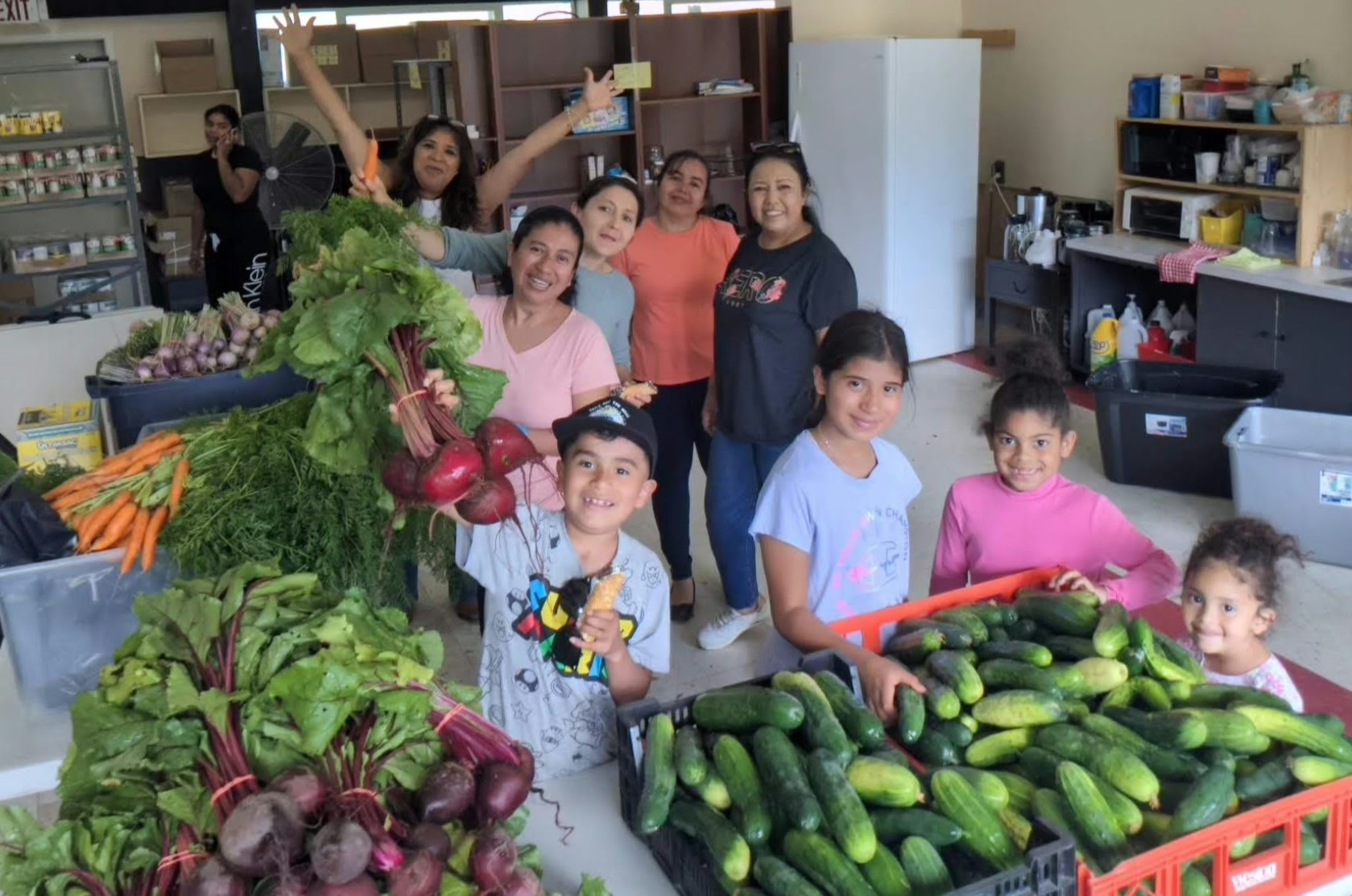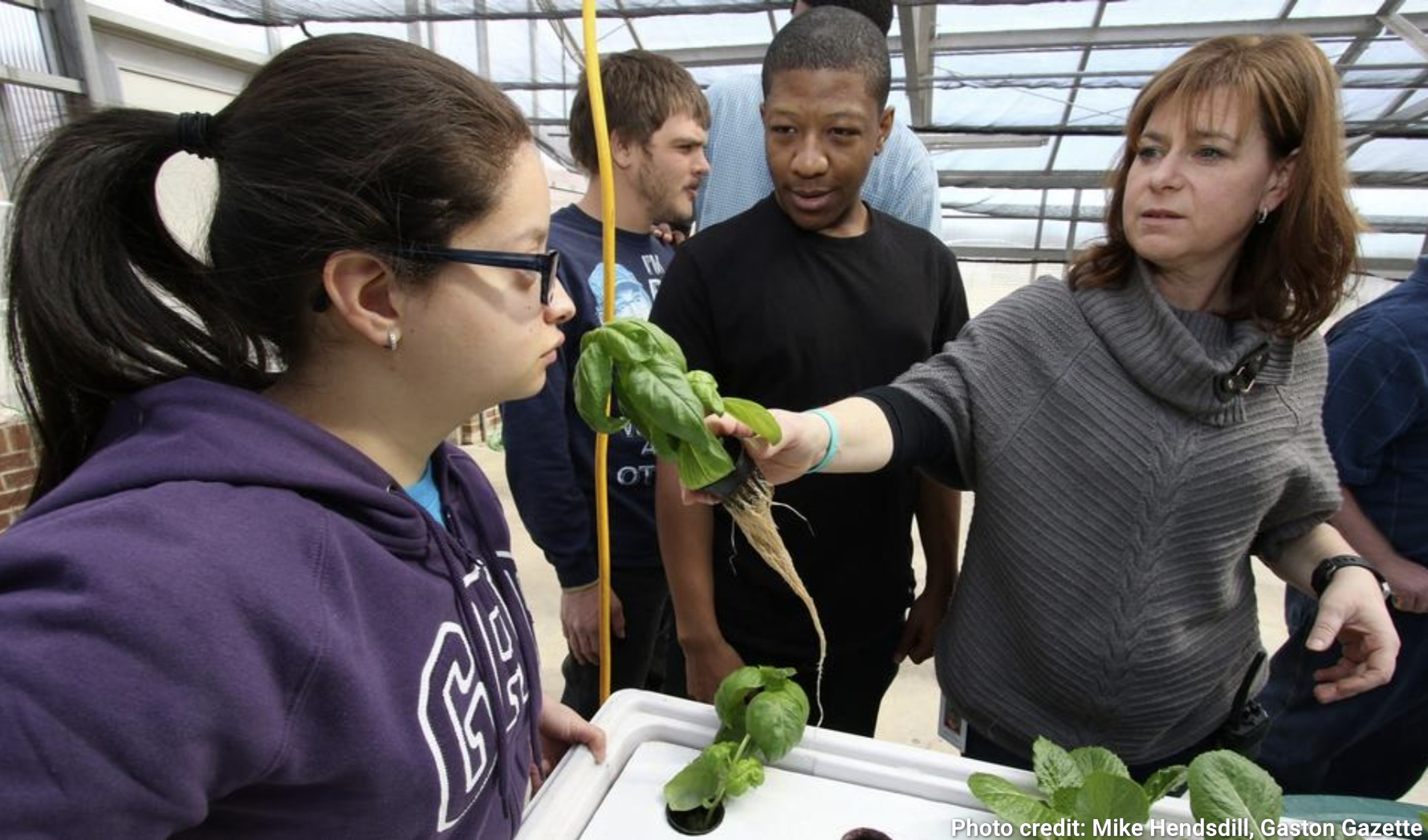 Talia Wucherer (right) is a special educator at the Webb Street School, a school specialized in teaching students with disabilities in North Carolina. She has been working at the Webb Street School for four years and has turned the school garden into one of the cornerstones of the institution.
Talia Wucherer (right) is a special educator at the Webb Street School, a school specialized in teaching students with disabilities in North Carolina. She has been working at the Webb Street School for four years and has turned the school garden into one of the cornerstones of the institution.
Talia, could you introduce yourself and tell me what your position is at the Webb Street School?
My name is Talia Wucherer. I’m a special educator. I work at Webb Street School, which is a specialized school for students with disabilities, about 150 of them from across Gaston County in North Carolina.
And how long have you been involved with the Webb Street School?
I’ve been involved with Webb Street for about eight years, as a parent, because I have a daughter that attends the school, but I’ve been on staff for the last four years. I came on because I have a background in landscape design and volunteering with a group of adults with disabilities doing horticultural therapy type programs. I coordinate the instruction in the garden.
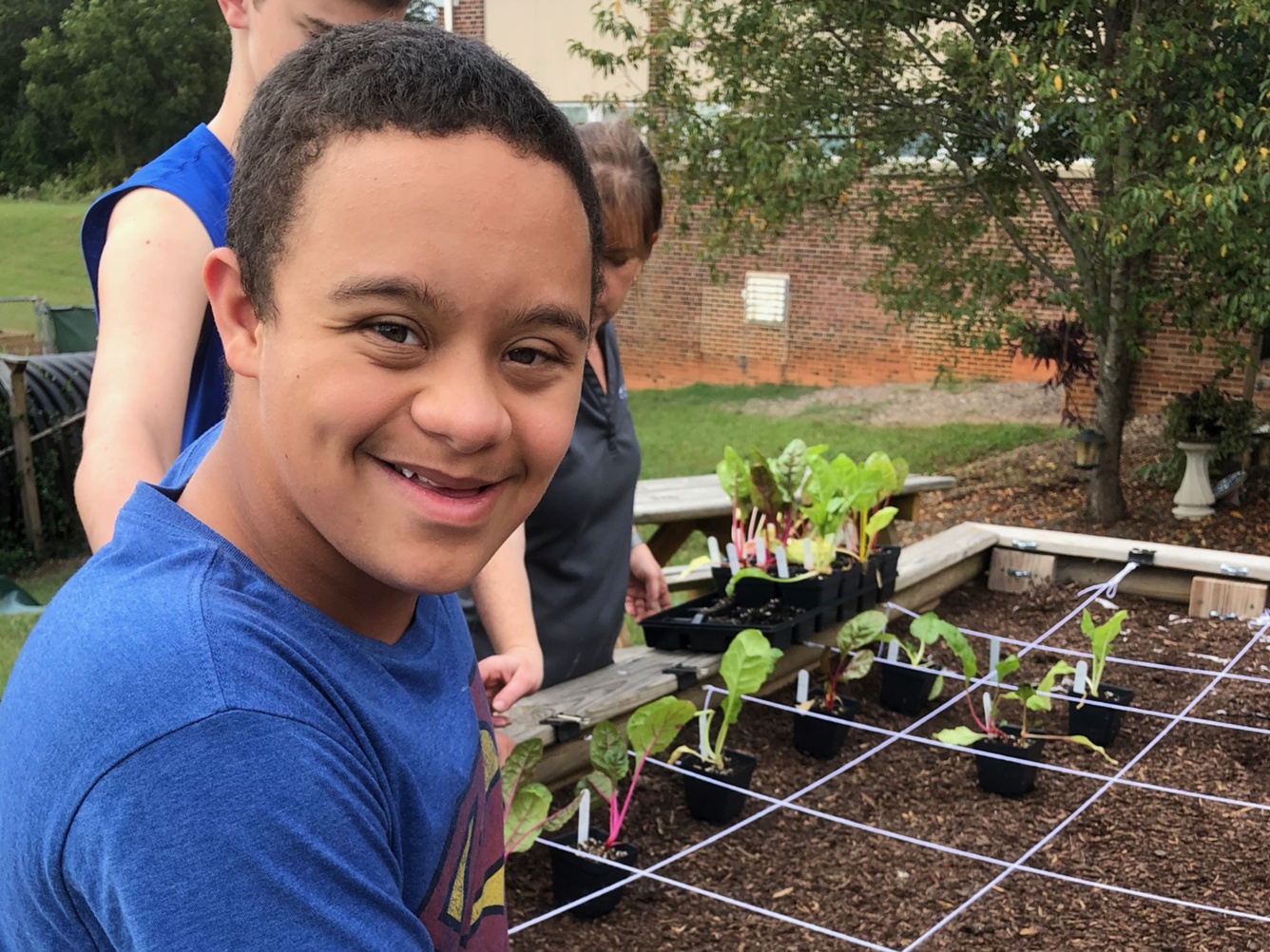 Could you tell me some more about the students at the Webb Street Garden and the mission of the garden?
Could you tell me some more about the students at the Webb Street Garden and the mission of the garden?
We serve students ages five through 22. We have different goals for each student, but we try to provide unique, hands-on learning opportunities for students as well as community-based vocational training.
We also try to get everyone out to the garden. For the youngest, it’s often about having a sensory experience of introducing them to different textures, smells, feelings, colors and for the oldest students, we use the garden and the greenhouses as a vocational program to prepare them for the next step once they exit school—to learn some type of skill that they can use past our building.
How did the garden get started?
It started with a Girl Scout project for a Gold Award. This girl scout approached the school to start a garden. She came in and did some sensory boards that we could use as an outdoor classroom.
I came on to Webb street and designed a new garden. There were some raised beds in place that needed to be repositioned and made more functional. This year the SeedMoney grant replaced those beds with new more accessible beds for our students. They are higher and more functional to accommodate the varying needs our students have.
What are some of the types of produce that you grow in that garden?
Our students primarily have access to our winter garden because school’s out over the summer months. Our students usually get to experience rainbow chard, kale, broccoli, lettuce, carrots, Brussels sprouts. We grow a variety of herbs.
We’re still working on finding something that works during the summer months. It can be hard to get enough volunteers. This year I’m thinking of planting something easy like sweet potatoes that the students could experience when they come back in the Fall.
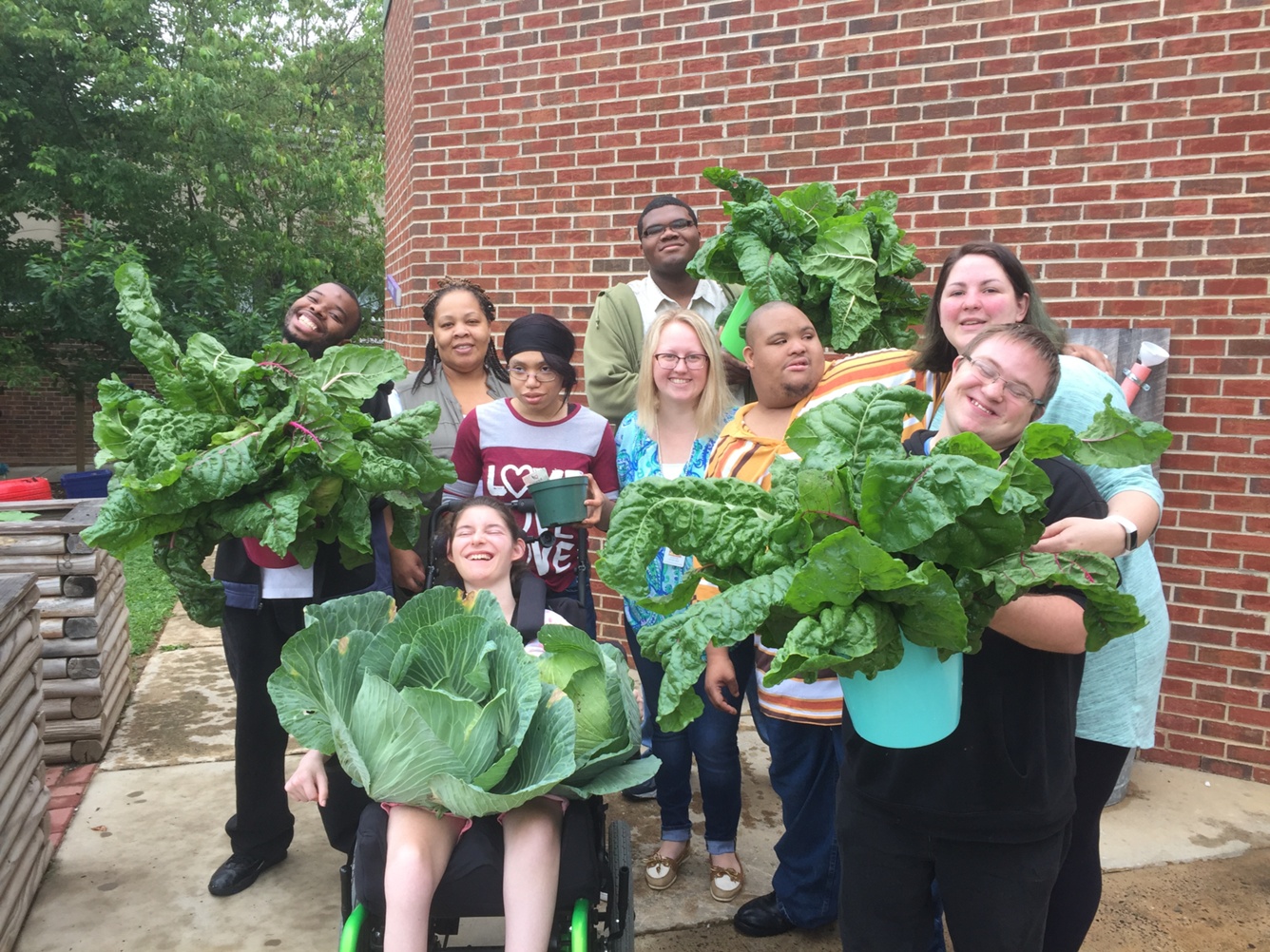 What are some of the students’ favorite things to cook?
What are some of the students’ favorite things to cook?
One of my most memorable moments was actually cooking rainbow chard. So many of our students had never tasted them. The students grew the chard, picked it, cleaned it, chopped it up and sauteed it with some olive oil, garlic and onion. They got to do the whole process and learn skills like kitchen safety and cooking along the way. Finally, they got to taste the fruit of their labor. For many of them that was the first time eating that and they really liked it, some even came back for seconds! It’s a way of teaching them simple recipes and also healthy eating. They can try new things and they might like it and it’s also OK if they don’t like it.
Could you describe some of the lessons you teach using the garden?
For instance, growing root vegetables is a great lesson because the whole concept of roots is really abstract. So that offers a great lesson for teaching. We teach them that we sometimes actually eat the roots and not just what is growing above the ground.
Also, I will say that our aquaponic system has been phenomenal in teaching that whole plant life cycle, because we have a propagation station that they use to germinate the seeds. Once you lift the rafts, you can see the entire root system. They get to see the entire process from what the seed looks like to what the root system looks when you harvest.That sounds like a great lesson.
It teaches biology, chemistry and ecology as well, because in an aquaponic system. You have a symbiotic relationship between the fish and the plants. We have to test the water to make sure the fish are producing enough waste for the plants and to make sure the plants are cleaning the water enough for the fish. It just becomes a really dynamic lesson. Teaching them how everything relies on each other, how you can’t use pesticides because it might kill different things. That becomes a lesson that carries beyond this, it’s what’s happening in our lakes because of pesticides.
Do you have any tips for people just starting or thinking about starting a garden?
I guess the best advice is to start small with something that is manageable. If you start too big, I think it gets overwhelming and hard to take care of. We started small with the garden and expanded it. We started small with an aquaponics demo system and now we produce 60 pounds of greens a week.
You make a lot of mistakes and you learn from your mistakes. So it’s a lot easier to correct and learn from smaller mistakes than from massive mistakes that you might not recover from financially.
Also its really important to have community partnerships especially for the school gardens. There are local restaurants that we provide to. We work with a local community college. We donate to local food banks. Church groups come in and build raised beds for us. We partnered with a high school carpentry class that has rebuilt all the raised beds for us. We’ve fostered a relationship with a landscape supply company not far from the school that usually helps us with soil and fertilizer. So all of that is really important.

It’s great that you’re strengthening community ties.
Well, I don’t think these gardens can thrive without the community ties. You know, and it’s important that it’s a two-way street. We have the ability to feed the community and also teach and foster relationships within the community.
Also, I think that’s the key to getting contributions to the program. If you don’t have those community ties. I don’t think there is an investment from the community back into the program.
As someone who’s had impressive results with SeedMoney’s crowdgrants platform, what tips do you have for others?
Share, share, and share again. And I mean, during the 30 days that it’s active, the more you share it on social media or through electronic newsletters, or however you can spread the word, the more you’ll get donations. That is the most effective way of bringing awareness but also getting the donations and if you’re not sharing the platform, it does not work. So you need to be a marketer.
We have a newsletter that we publish bi-weekly through email and the school Facebook page. We also do a lot of presentations about our garden, at the state level, at the local level, at the district level, it’s all about sharing what we’re doing. So when it comes a time that we have a need, we can reach back out.
Do you have any parting words for the readers?
A garden is probably one of the most valuable learning tools that you can use, it’s so hands-on. The students love it, they love being outside, they get to experience things that otherwise they might never get to experience. So I’ve truly enjoyed seeing how our students have grown and reached milestones. For some, it’s a new sensory experience and for others it’s the opportunity to learn a skill that allows them to get a job when they leave the school. Having a garden is life-changing.



